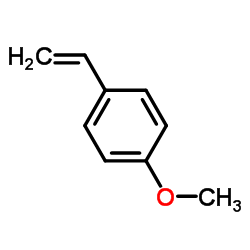134029-62-2
| Name | 1-(4-methoxyphenyl)-2-(3,4,5-trimethoxyphenyl)ethene |
|---|---|
| Synonyms |
1,2,3-Trimethoxy-5-[(1E)-2-(4-methoxyphenyl)ethenyl]-benzene DMU 212 MR-4
1-(4-methoxyphenyl)-2-(3,4,5-trimethoxyphenyl)ethene 3,4,5,4'-Tetramethoxystilbene 3,4,5, 4'-TETRA METHOXYSTILBENE 1,2,3-Trimethoxy-5-[(E)-2-(4-methoxyphenyl)vinyl]benzene DMU-212 1,2,3-trimethoxy-5-[(E)-2-(4-methoxyphenyl)ethenyl]benzene |
| Description | DMU-212 is a methylated derivative of Resveratrol (HY-16561), with antimitotic, anti-proliferative, antioxidant and apoptosis promoting activities. DMU-212 induces mitotic arrest via induction of apoptosis and activation of ERK1/2 protein. DMU-212 has oral bioavailability[1][2]. |
|---|---|
| Related Catalog | |
| In Vitro | DMU-212 (0.3125-40 μM) inhibits growth of A375, MeWo, Bro and M5 cells human melanoma cells[1]. DMU-212 (30-50 μM; 24 hours) induces upregulation of cell cycle inhibitors, apoptosis and ERK activation in A375 cells[1]. DMU-212 induces upregulation of cell cycle inhibitors, apoptosis and ERK activation in A375 cells[1]. DMU-212 induces G2/M arrest and apoptosis in cancer cells[1]. DMU-212 induces mitotic arrest, apoptosis and activation of ERK1/2 protein[1]. Cell Proliferation Assay[1] Cell Line: A375 cells, MeWo cells, M5 cells, Bro cells Concentration: 0.3125 μM, 0,625 μM, 1.25 μM, 2.5 μM, 5 μM, 10 μM, 20 μM, 40 μM Incubation Time: 96 hours Result: Inhibited the cellular proliferation of human melanoma cells at submicromolar or micromolar concentrations (IC50=0.5 μM for A375 and Bro and IC50= 1.25 μM for MeWo and M5 cells). Cell Cycle Analysis[1] Cell Line: A375 cells Concentration: 20 μM, 30 μM, 50 μM Incubation Time: 24 hours Result: Caused a marked increase in the levels of p21, p53 and cyclin B1 proteins with a concomitant decrease in the levels of cyclin A2. Western Blot Analysis[1] Cell Line: A375 cells Concentration: 20 μM, 30 μM, 50 μM Incubation Time: 24 hours Result: Significant upregulation of Bax, caspase 3 and caspase 9 protein levels, while the levels of the anti-apoptotic protein Bcl-2 were decreased. |
| In Vivo | DMU-212 (50 mg/kg; i.g.; three times a week; for 14 days) inhibits tumor growth in xenograft model of human ovarian cancer[2]. Animal Model: 6-weeks-old SCID female mice (20-24 g), with ovarian cancer xenografts[2] Dosage: 50 mg/kg Administration: Oral gavage, three times a week, for 14 days Result: Lower tumor burden. |
| References |
| Density | 1.1±0.1 g/cm3 |
|---|---|
| Boiling Point | 444.0±40.0 °C at 760 mmHg |
| Molecular Formula | C18H20O4 |
| Molecular Weight | 300.349 |
| Flash Point | 144.1±34.2 °C |
| Exact Mass | 300.136169 |
| PSA | 36.92000 |
| LogP | 4.37 |
| Vapour Pressure | 0.0±1.0 mmHg at 25°C |
| Index of Refraction | 1.588 |
| RIDADR | NONH for all modes of transport |
|---|
| Precursor 9 | |
|---|---|
| DownStream 0 | |
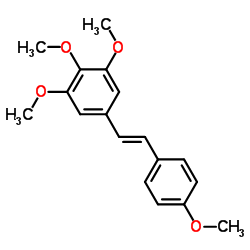

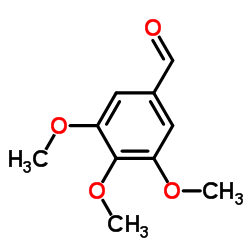
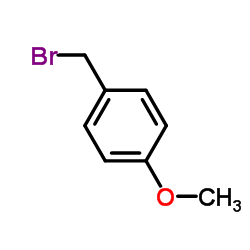

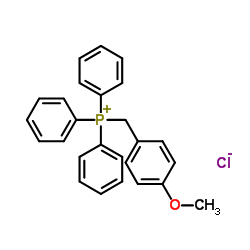

![[(3,4,5-trimethoxyphenyl)methyl]phosphoric acid diethyl ester structure](https://image.chemsrc.com/caspic/126/134029-74-6.png)
